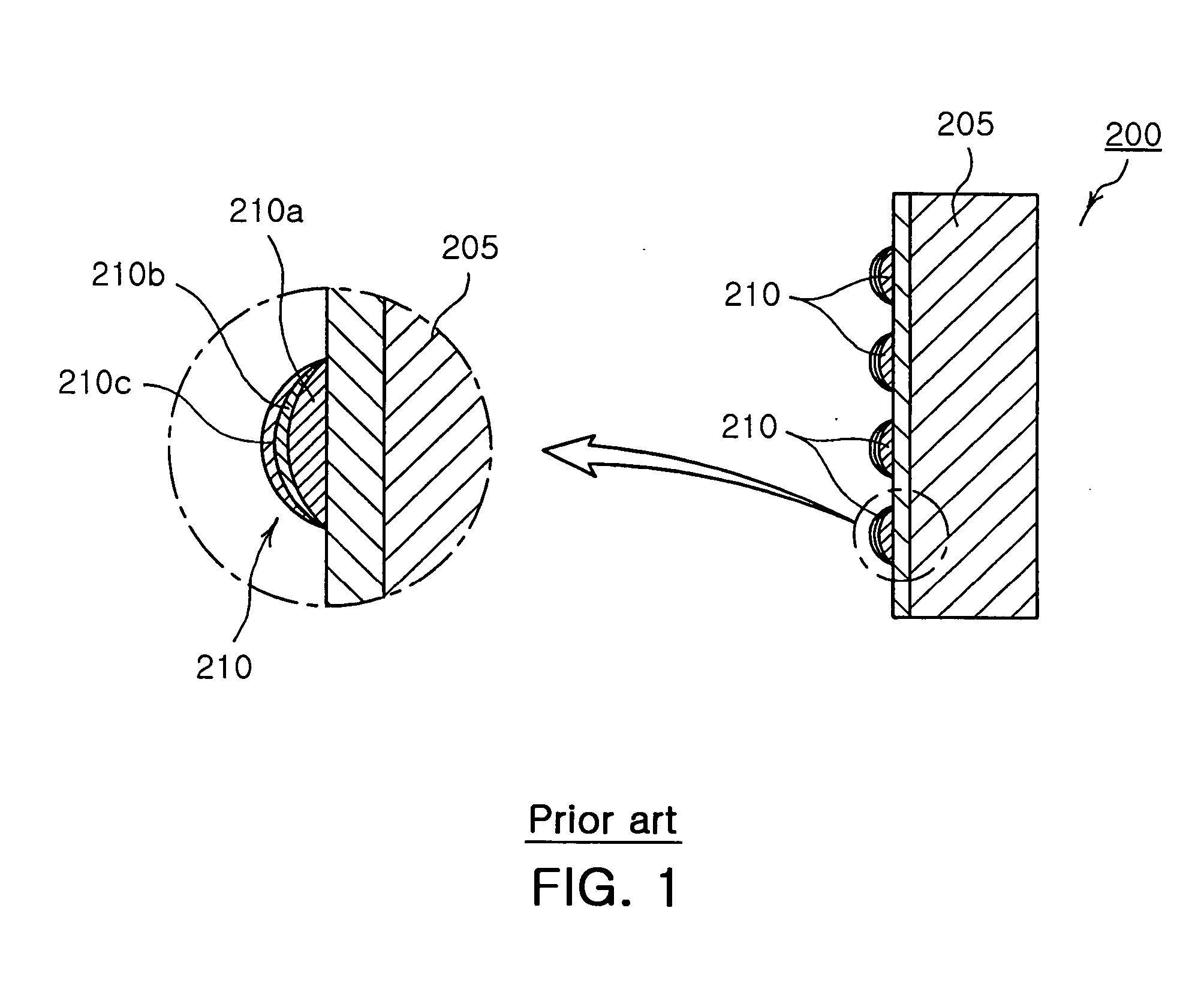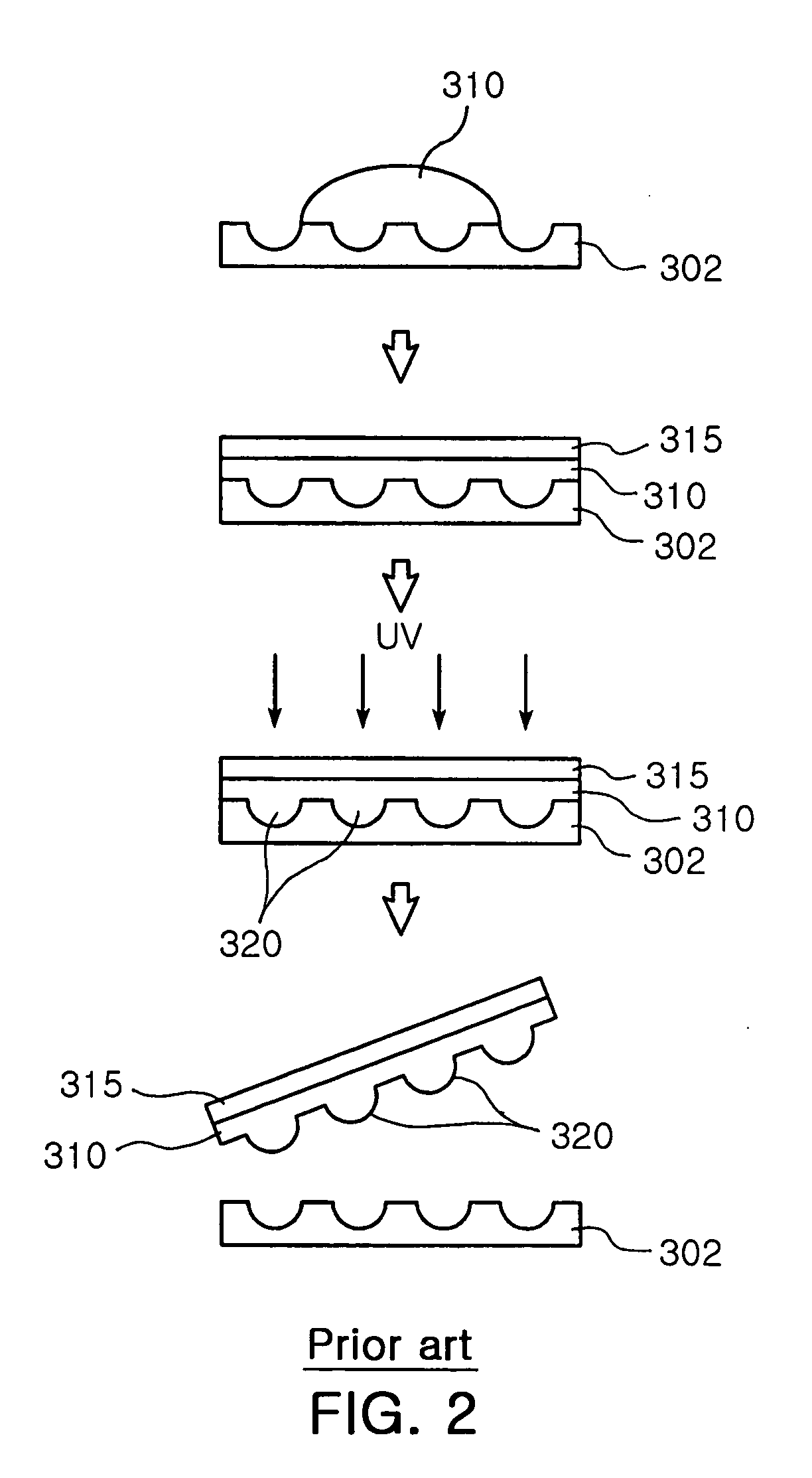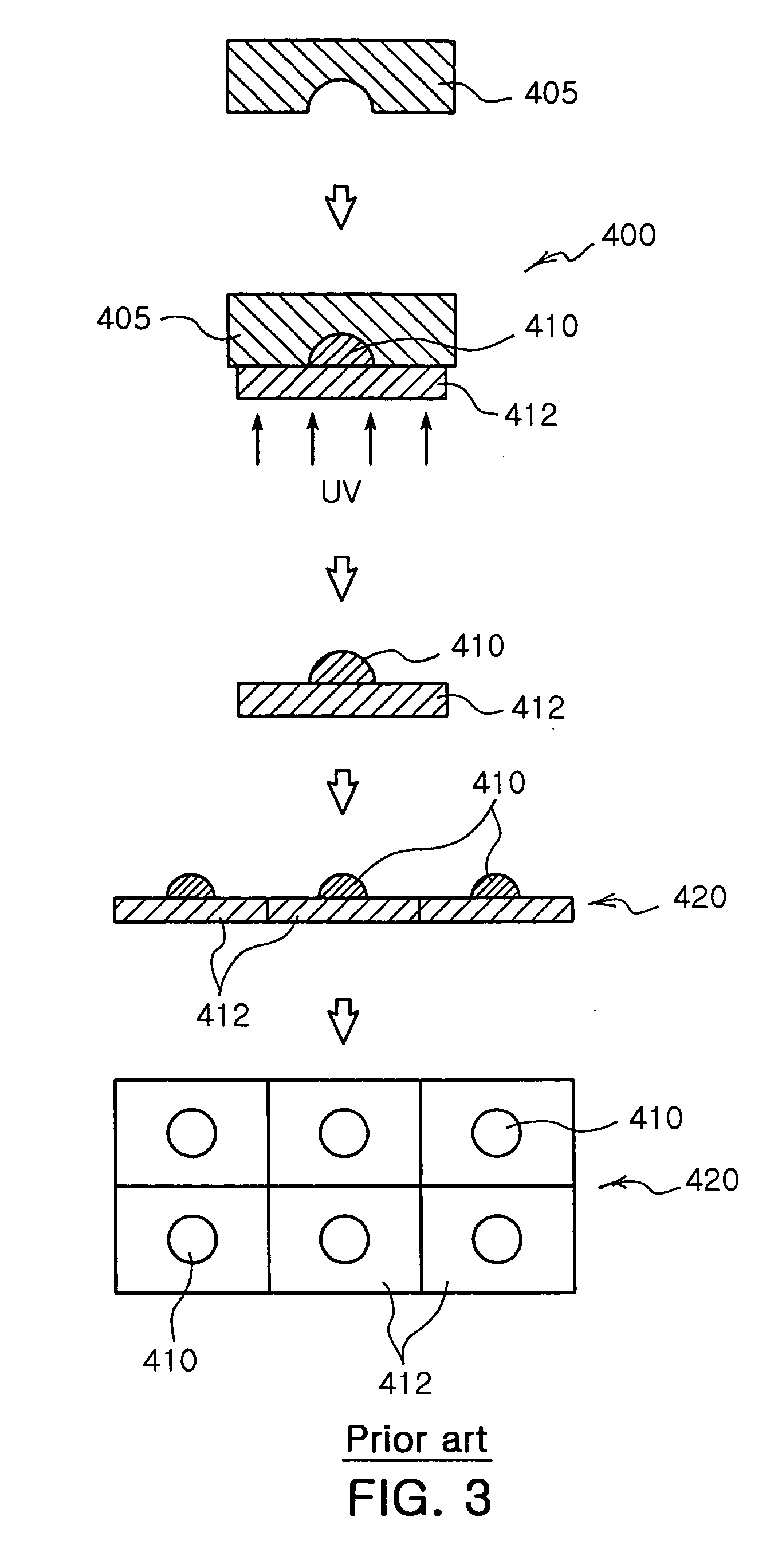Method of manufacturing a high sag lens and a lens manufactured by using the same method
a manufacturing method and high sag technology, applied in the field of manufacturing a high sag lens and a lens, can solve the problems of difficult to manufacture high sag or sag having a height of hundreds of m, limited conventional methods, and difficult to achieve aspheric surface, etc., to achieve enhanced lens quality and high sag
- Summary
- Abstract
- Description
- Claims
- Application Information
AI Technical Summary
Benefits of technology
Problems solved by technology
Method used
Image
Examples
Embodiment Construction
[0036] Preferred embodiments of the present invention will now be described in detail with reference to the accompanying drawings.
[0037] In a method of manufacturing a high sag lens (designated with the reference sign 1) according to the invention, as shown in FIGS. 5a to 5c, first, polymer 15 is injected into a mold 10 having a plurality of grooves 10a and cured by ultraviolet ray to form a plurality of lens sections 20 (see FIG. 5a). The mold 10 is machined by a diamond turning machine (DTM), which ensures easy manufacture of an aspherical lens and enables manufacture of a high sag lens. That is, the grooves 10a formed on the mold 10 have a depth of hundreds of μm, and thus just one molding allows a depth of a high sag lens at one time.
[0038] Further, polymer 15, which is injected into the mold 10, is cured by ultraviolet ray with its surface exposed to air. In this case, polymer positioned in the grooves 10a of the mold 10 is cured most slowly at an interface with air. This is ...
PUM
| Property | Measurement | Unit |
|---|---|---|
| Composition | aaaaa | aaaaa |
| Shrinkage | aaaaa | aaaaa |
| Optical properties | aaaaa | aaaaa |
Abstract
Description
Claims
Application Information
 Login to View More
Login to View More - R&D
- Intellectual Property
- Life Sciences
- Materials
- Tech Scout
- Unparalleled Data Quality
- Higher Quality Content
- 60% Fewer Hallucinations
Browse by: Latest US Patents, China's latest patents, Technical Efficacy Thesaurus, Application Domain, Technology Topic, Popular Technical Reports.
© 2025 PatSnap. All rights reserved.Legal|Privacy policy|Modern Slavery Act Transparency Statement|Sitemap|About US| Contact US: help@patsnap.com



